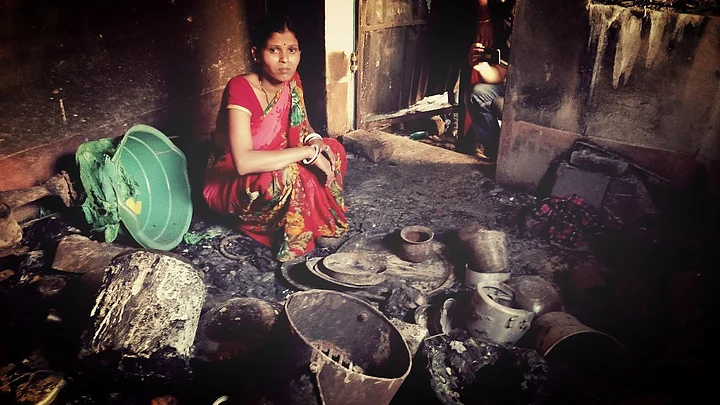“Bhago! Bhago!”
That’s what a stout, middle-aged man dressed in all-white shouted (panted) to us when we asked him why everyone was running. Our car stopped him mid-track as he, and all the locals of Raniganj, seemed to be running for their lives.
Five days earlier, Raniganj – a noisy sub-town located 20 km from West Bengal’s Asansol – had witnessed communal clashes between Hindus and Muslims after a Ram Navami procession went awry.
Since then, there has been heavy police deployed in Raniganj as well as Asansol, which also saw clashes two days after the Raniganj incident. Houses, shops and vehicles of both communities were burnt with impunity in these clashes – and two lives were lost.
A sense of unrest prevailed among the people, even as life had seemingly gotten back to normal.
Ratan Da, my driver – not used to travelling to remote or volatile places with journalists – was quick to drop off a local Muslim boy who was showing me the damages and make a dash out of the city. As we came out, we saw hundreds of people coming out of the city with us. The entire town had a deadly buzz.
That night, I got a call from Rahim, the boy who was showing us around. He informed me that a fire had broken out in a shop due to an electrical short-circuit. As news of the fire spread, everyone thought a fresh bout of violence had broken out and started running for shelter.
“Aapne suna na, madam? Uss aadmi ne bola ki Musalman log aag laga rahe hain (you heard him right, Madam? They said Muslims were burning things down)” said Rahim, who was in the car when the man in white shouted at us to run.
“No,” I said firmly. “He’d just asked us to run. Nothing about Muslims or Hindus.”
He kept quiet for a while before asking me to visit Raniganj again when he’d show me a few more houses that were burnt down.
The entire episode, to me, summed up how on-edge the area has been since the clashes. Hindu houses have whispered in hushed tones saying that they’re scared to voice their fear aloud in a Muslim-dominated locality. Similarly, in Muslim-minority areas, Muslims have always been sure to point out how their houses/shops were selectively burnt while Hindu establishments around them remained unscathed.
The animosity and the fear of the “other” is so strong, that any rumour or incident is causing people to panic.
But this fear is new.
This particular belt has seen Muslims and Hindus co-exist for a long time. The Muslim and Hindu families, who are neighbours now, have been neighbours for many years.
And even now, both communities, in co-inhabited areas, want to maintain peace.
Then why this sudden suspicion for each other?
As the whodunnit over these clashes continue, and the (mute) police picks up people by the dozen, the only explanation being given to those who have lost a lot is that the “others” and their communal hatred was responsible for their losses.
Even in the localities of Asansol that saw violence, Hindus believe Muslims are not being brought to book and vice versa.
“All the politicians and the media are coming by the main road. They talk to a few people and go away. No one has come inside and reached out to us,” say those (of both communities) living in the interiors of the riot-affected regions.
A strong sense of alienation has developed between the erstwhile peaceful Hindus and Muslims. And the recent turn of events has cemented the place of the“other” as the enemy.
As the embers of the riot die down, and the police deployment (hopefully) moves away in a few more days – what will be left behind is the animosity, waiting for one short spark to take the shape of a clash once again.
